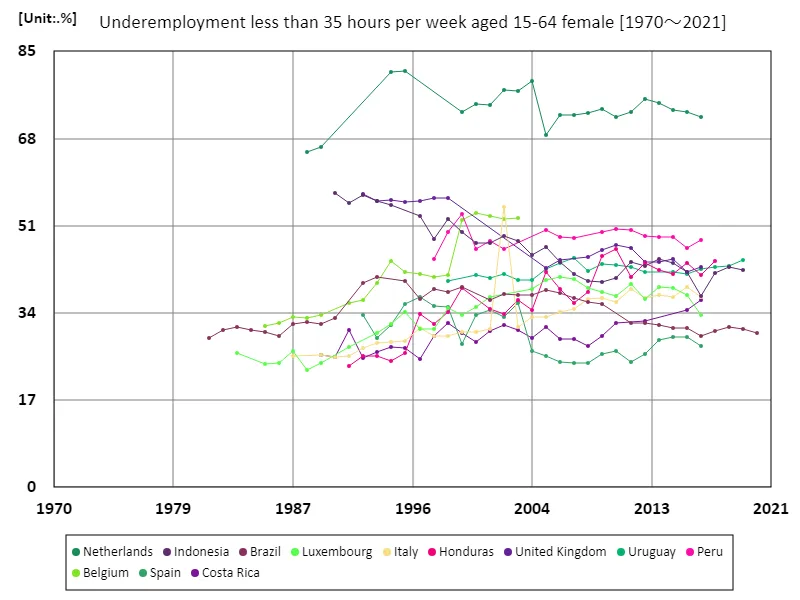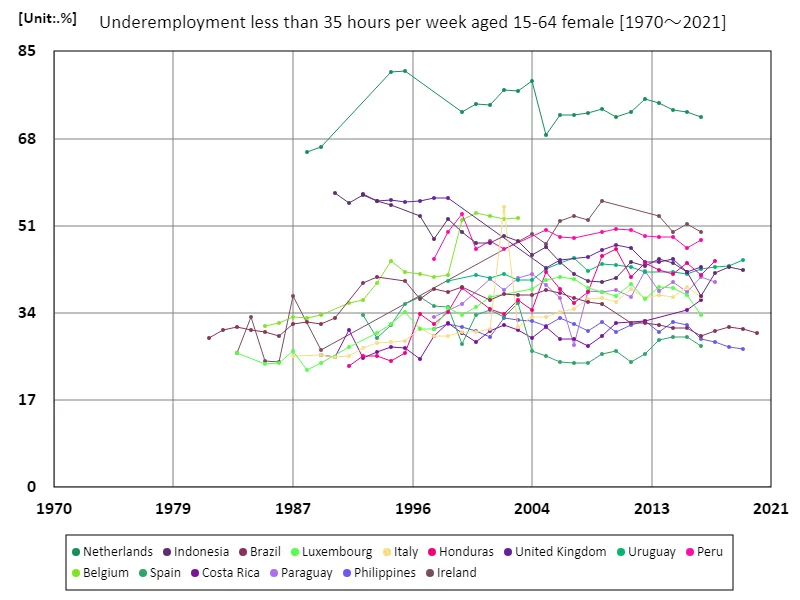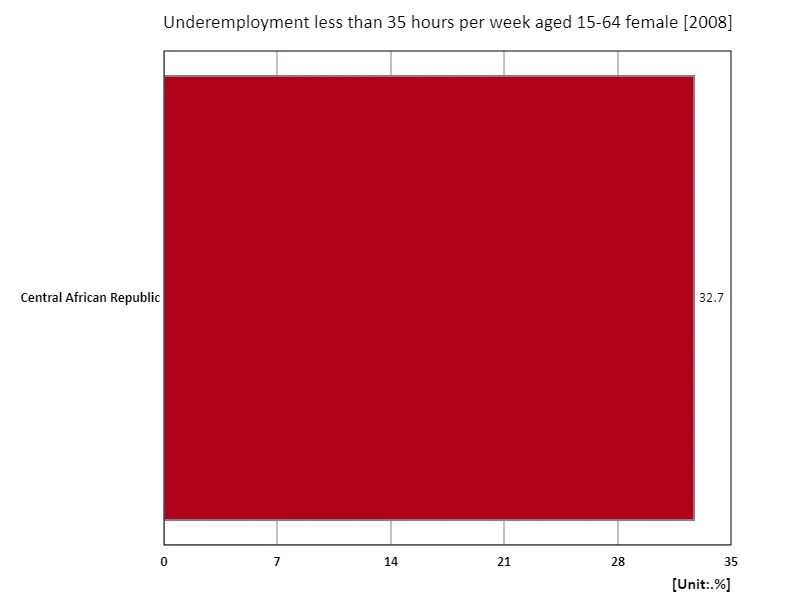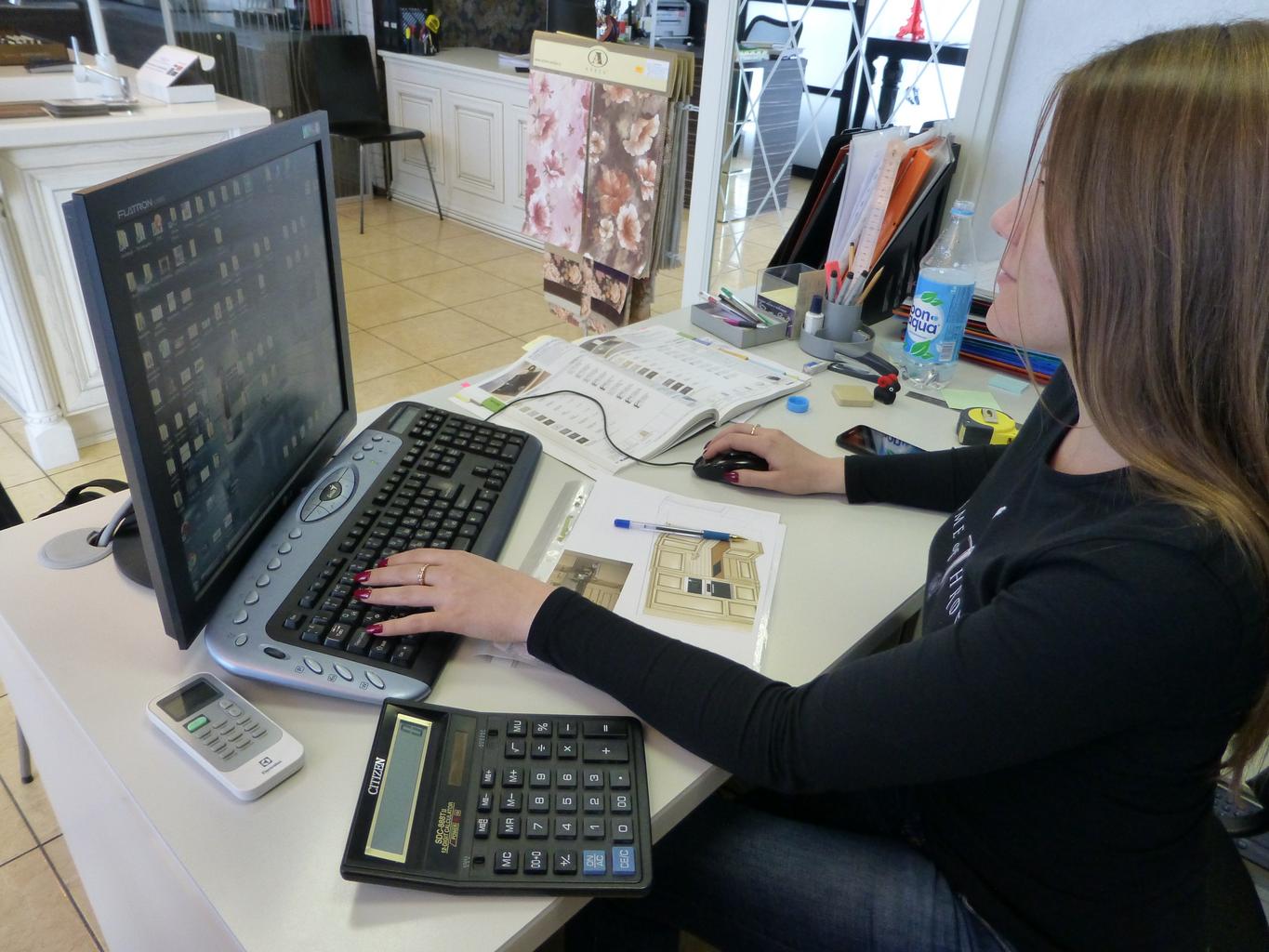Abstract
Women are a key challenge in terms of employment underemployment, especially underemployment. Brazil’s high rate of 30.1% in 2020 data reflects economic instability and structural problems in the labor market. Although female labor force participation has been increasing over the past few decades, many women remain in non-regular or low-wage jobs, making it difficult to achieve full employment. In particular, juggling family responsibilities and childcare limits equal opportunities in the workplace. This could undermine the potential for economic growth. In order to improve the unemployment rate, policy reviews and improvements to the working environment are needed. Ultimately, a comprehensive approach is needed to help more women access stable employment.
Ages 15-64, underemployed (
The share of women in underemployment varies widely across countries. The staggering figure of 81.3% in the Netherlands in 1995 reflects the structure of the labour market at the time. The introduction of childcare leave and flexible working hours systems is the reason why more women are entering the workplace. Subsequent data shows that the figure remains at 88.8%, but female labor participation remains important, with many women still underemployed (working less than 35 hours), making securing stable employment a challenge. Although women’s status in the labor market has improved since 1981, they continue to face lower wages and more unstable employment conditions than regular employment. This trend is influenced by family responsibilities and societal expectations, calling for improved labour policies and increased education and training. Ultimately, it is essential to create an enabling environment for women to access sustainable employment.


The maximum is 81.3%[1995] of Netherlands, and the current value is about 88.8%
Ages 15-64, underemployed (less than 35 hours per week), women (% of working-age female employment population) (Worldwide)
The underemployment rate for women aged 15 to 64 in South Korea was a staggering 99.7% in 2009, reflecting the unique circumstances of the labor market at the time. This extreme underemployment is driven by a culture of long working hours, division of household responsibilities and economic insecurity. In South Korea, although the labor force participation rate for women is high, many remain in part-time or non-regular employment, and it remains difficult for them to obtain stable employment. In 2020, this underemployment rate fell to 37.3%, but it remains high. This is due to government policy changes and efforts to support women’s advancement in the workplace, but the underlying problem has not been resolved. In particular, the burden of childcare and nursing care falls disproportionately on women, making it difficult for them to transition to regular employment. In the future, in order to eliminate gender inequality in the labor market, more flexible employment arrangements and improved childcare support systems will be required. In order to realize sustainable employment, it is essential to create an environment in which women can work with peace of mind.


The maximum is 81.3%[1995] of Netherlands, and the current value is about 88.8%
Ages 15-64, underemployed (
The underemployment rate for women aged 15 to 64 in 2021 was high at 65.5% in Ethiopia, reflecting the difficult position of women in the labor market, especially in developing countries. In Ethiopia, there is a lot of informal employment, mainly in agriculture, and it is common for women to work part-time, which prevents them from achieving economic independence. The overall average of 35% reflects regional disparities. While underemployment rates are low in developed countries, they tend to be high in developing countries. This is due to a lack of education and skills, as well as social and cultural factors, so there is an urgent need to create employment opportunities and improve working conditions. The total figure of 175% also suggests that women are engaged in multiple underemployment, which puts them under economic pressure. These data point to the need for improved policies and stronger education and training programs, particularly to improve employment opportunities for women, which will lead to sustainable growth for the economy as a whole.


The maximum is 65.5% of Ethiopia, the average is 35%, and the total is 175%
Ages 15-64, underemployed (
Data from 2008 show that underemployment rates (<35 hours) for women aged 15-64 are as high as 32.7% in the Central African Republic. The country’s high underemployment rate reflects the effects of economic instability and war, with many women working in precarious working conditions. The overall average was also the same at 32.7%, indicating that this is a common issue faced by many countries. Underemployment hinders women’s economic independence and also affects their ability to improve their social status. In particular, limited opportunities for education and vocational training make it difficult for women to transition to full-time employment. Additionally, household roles and societal expectations limit women’s equal opportunities in the workplace. Given this backdrop, policy intervention is crucial. Specifically, there is a need for systems that expand educational opportunities, support childcare, and promote flexible working styles. Creating an environment in which women can obtain sustainable employment will also lead to growth in the economy as a whole, so efforts must be made from a long-term perspective.


The maximum is 32.7% of Central African Republic, the average is 32.7%, and the total is 32.7%



Comments